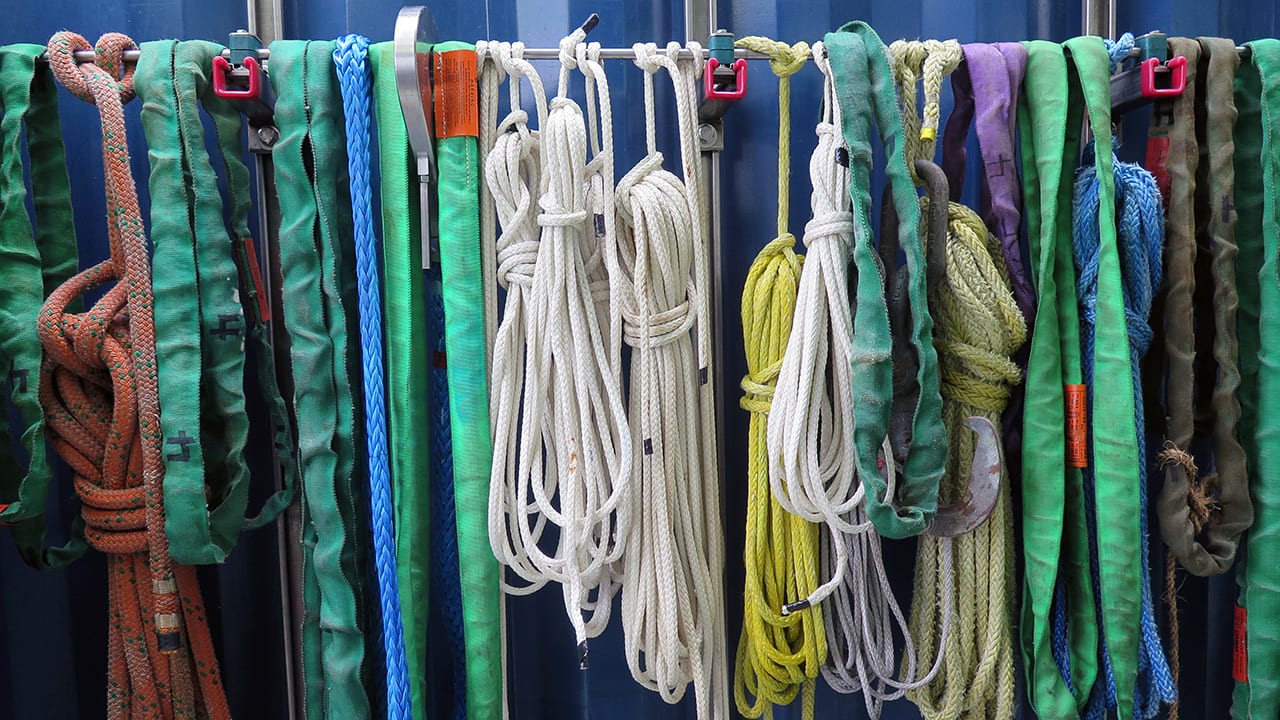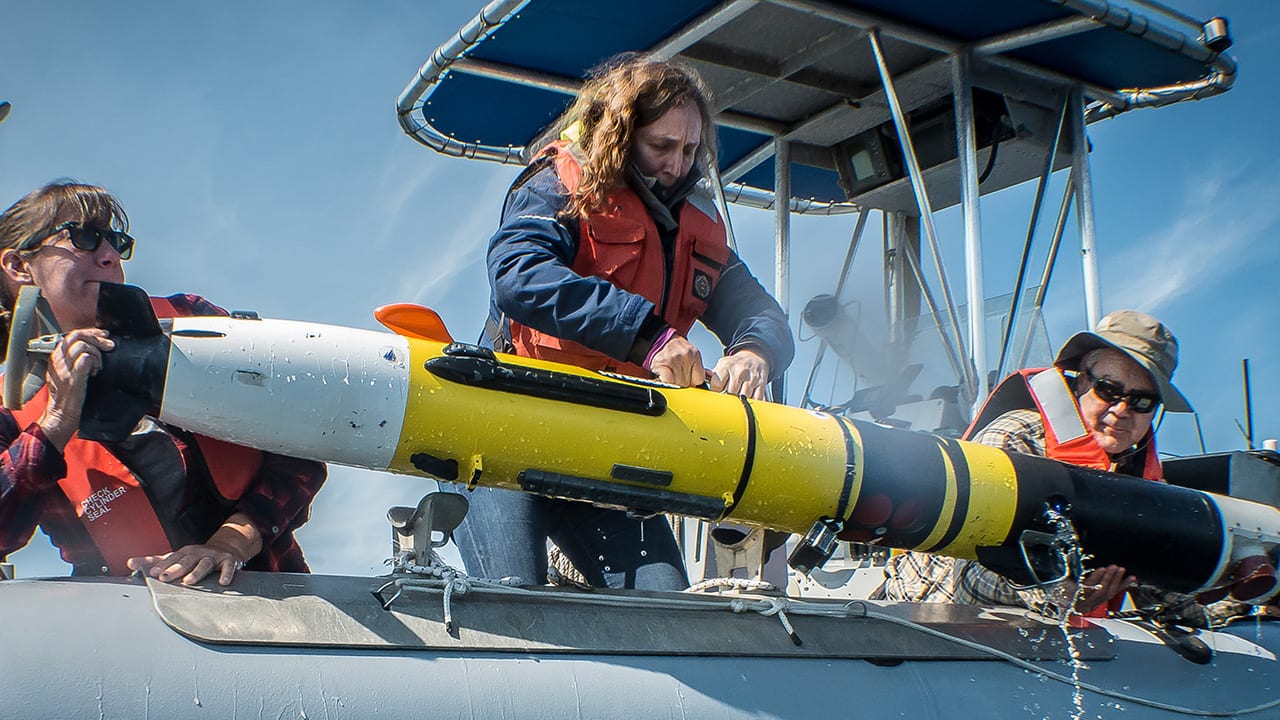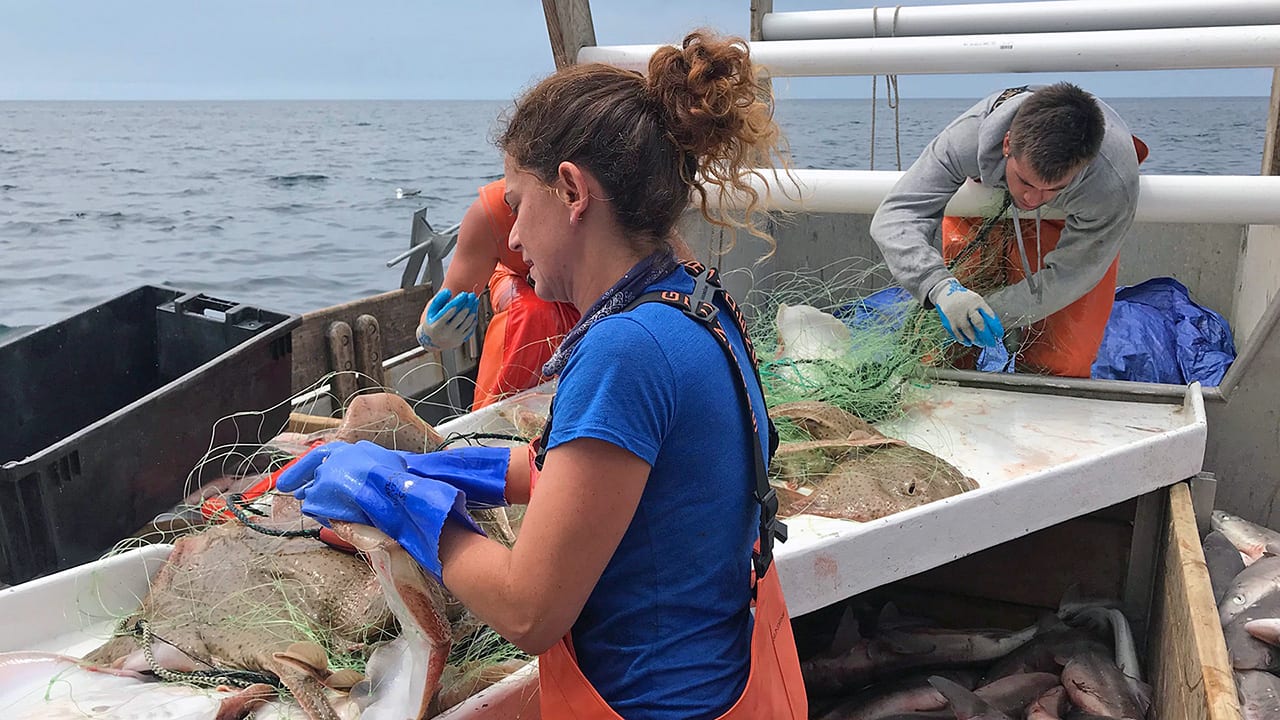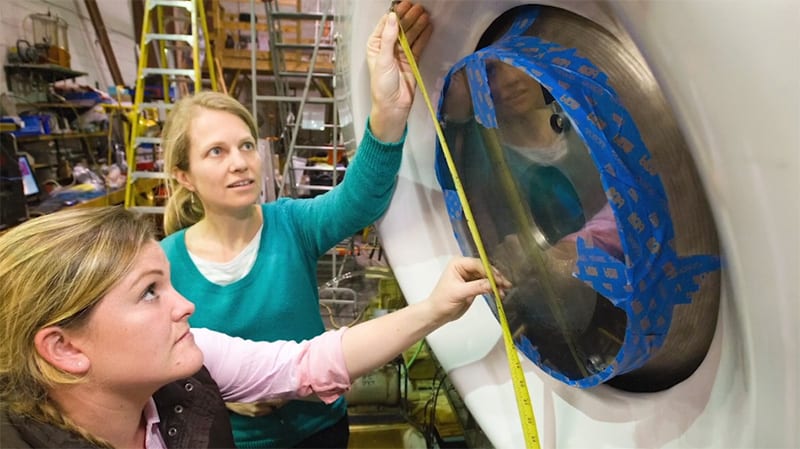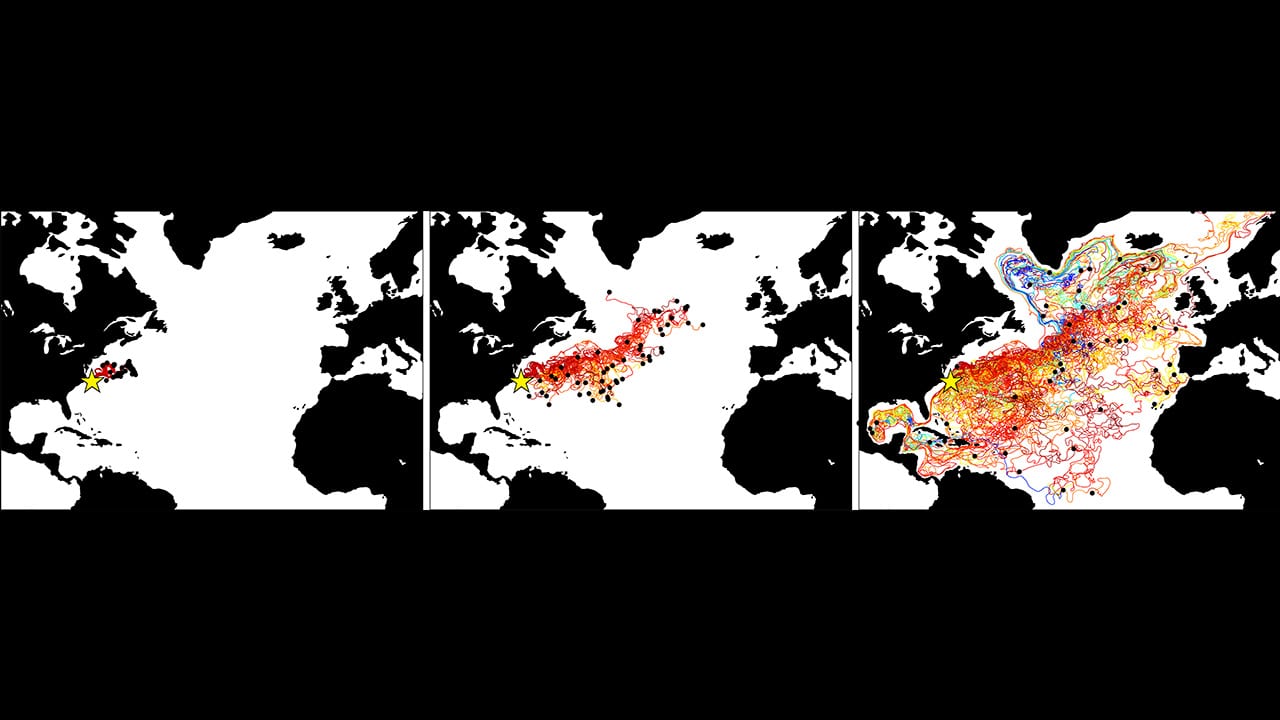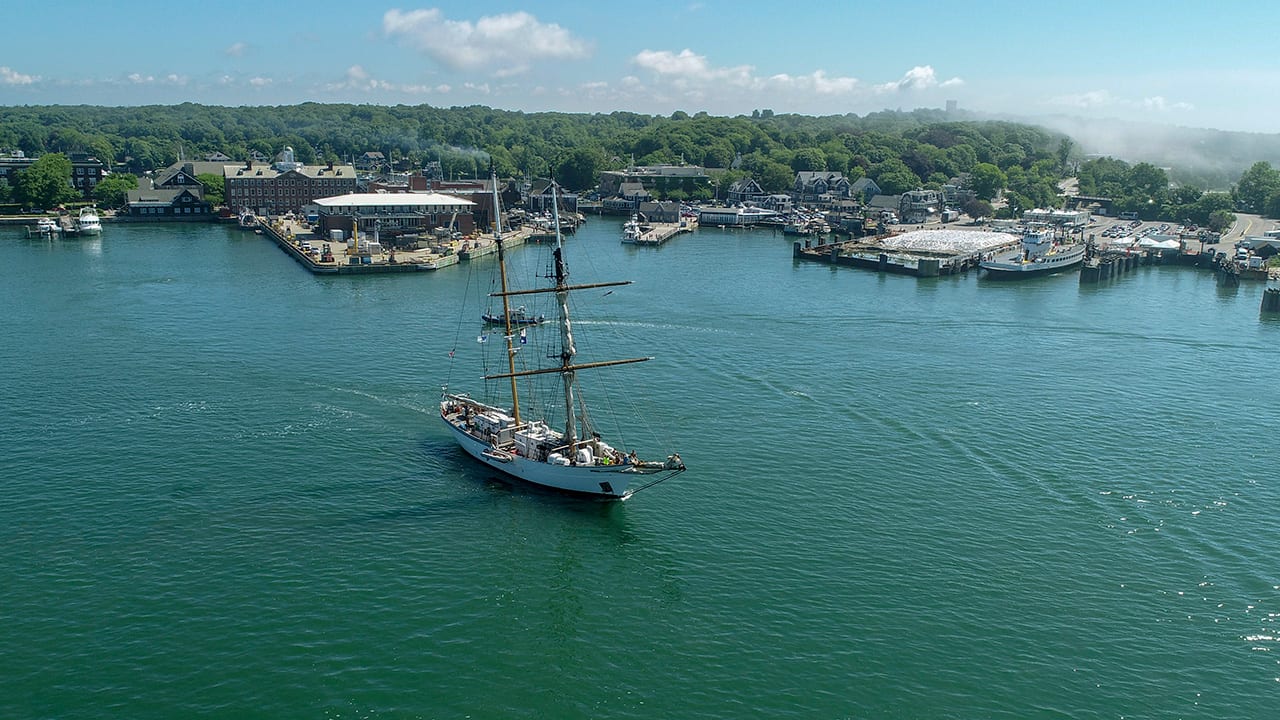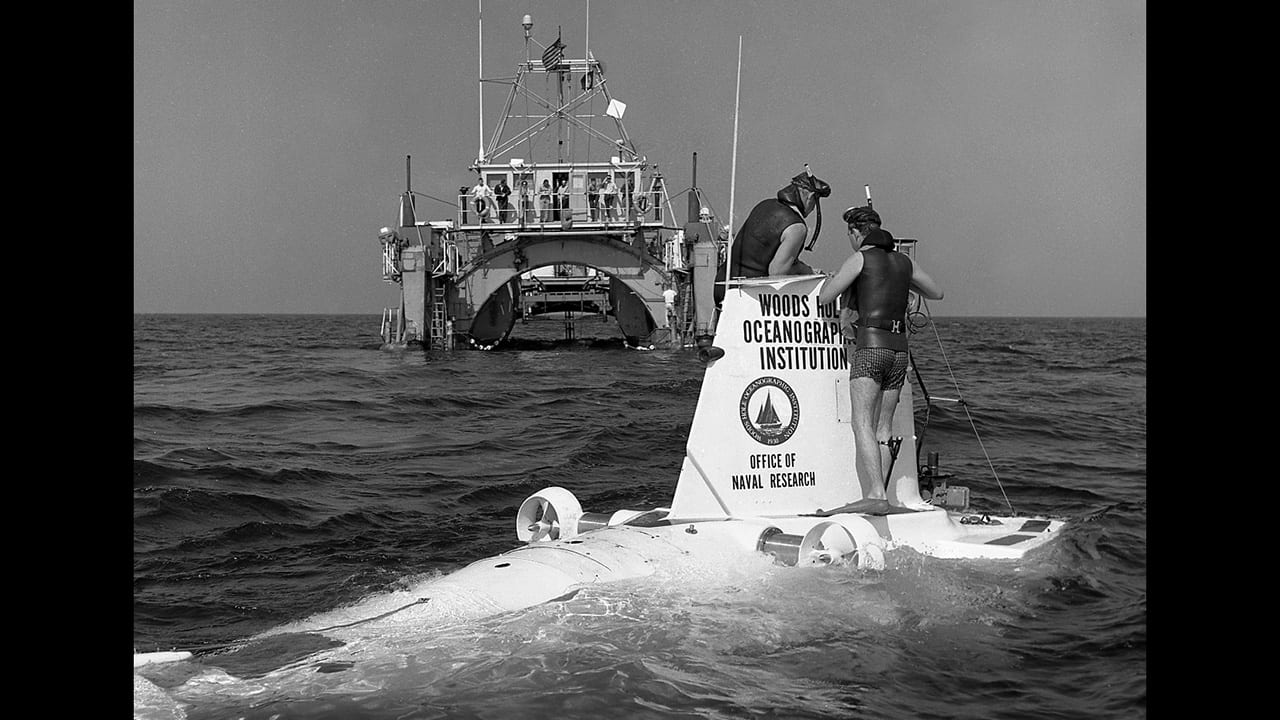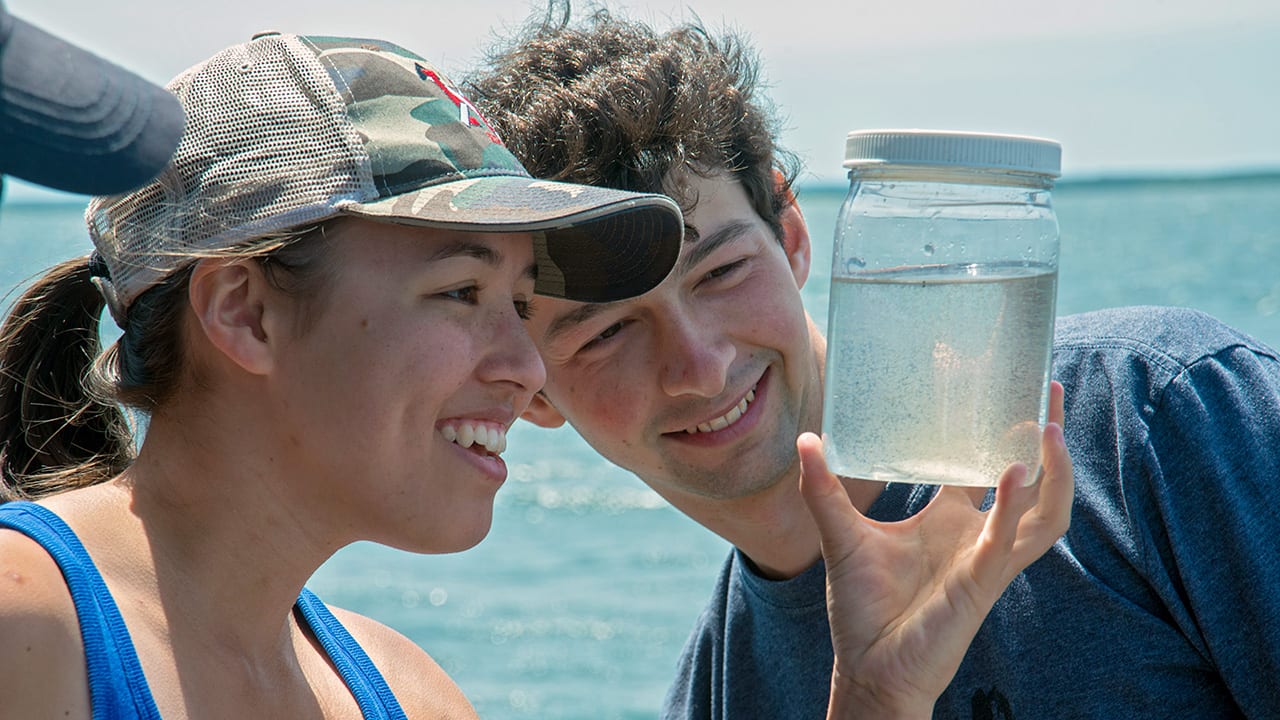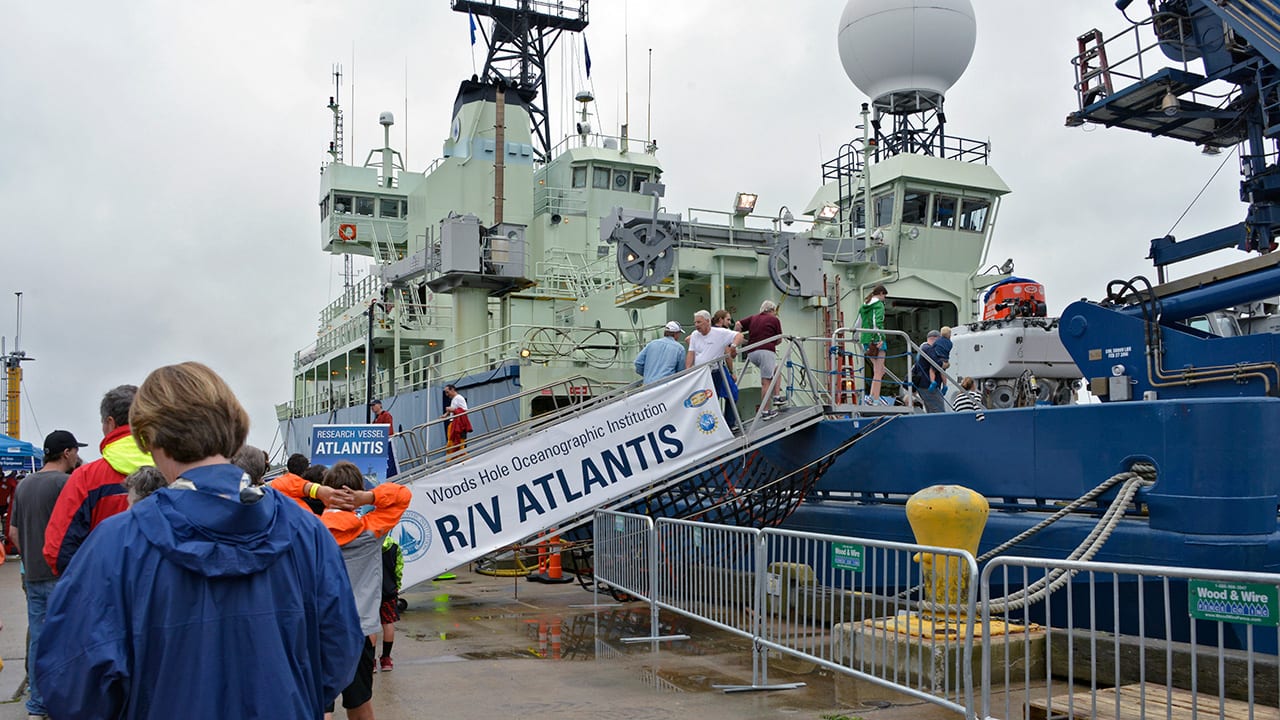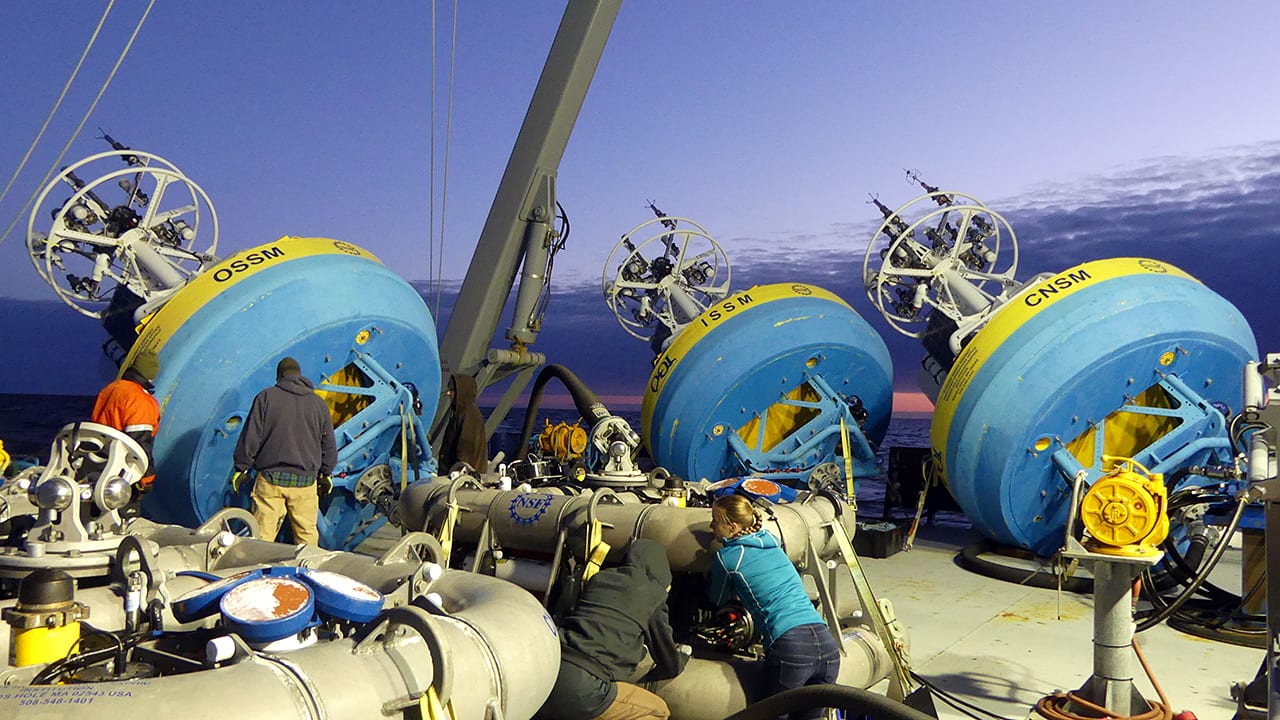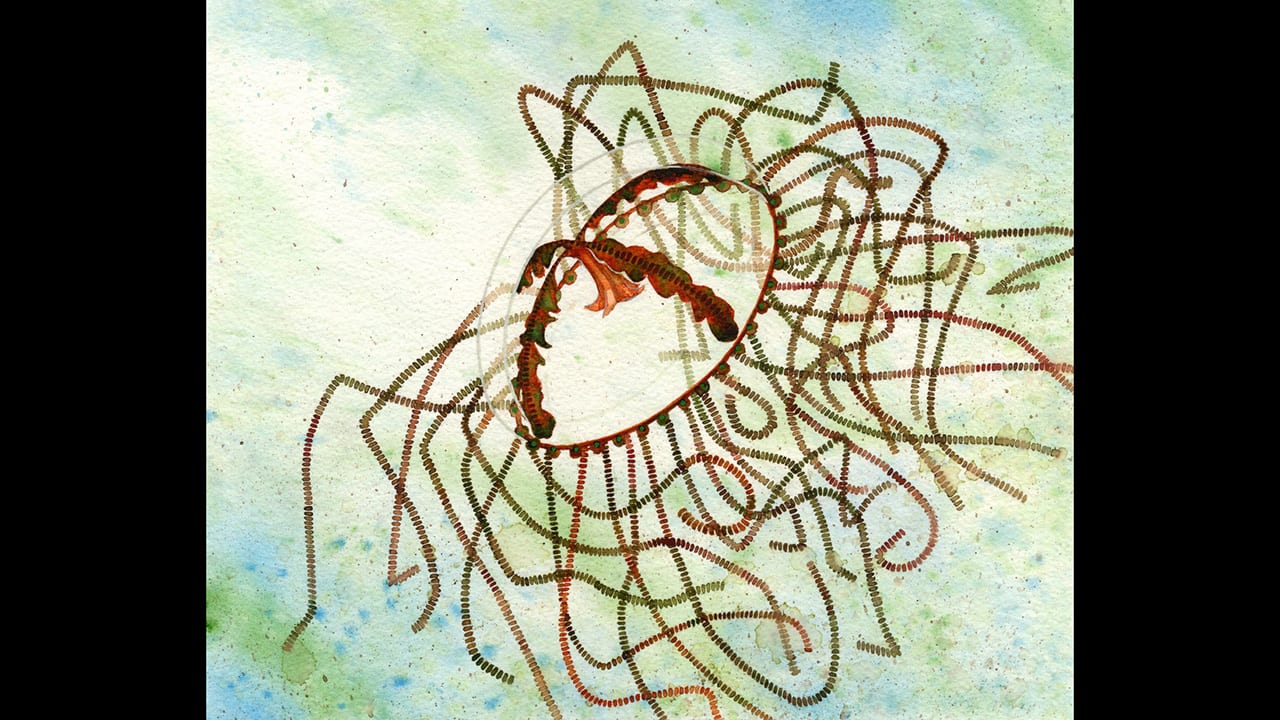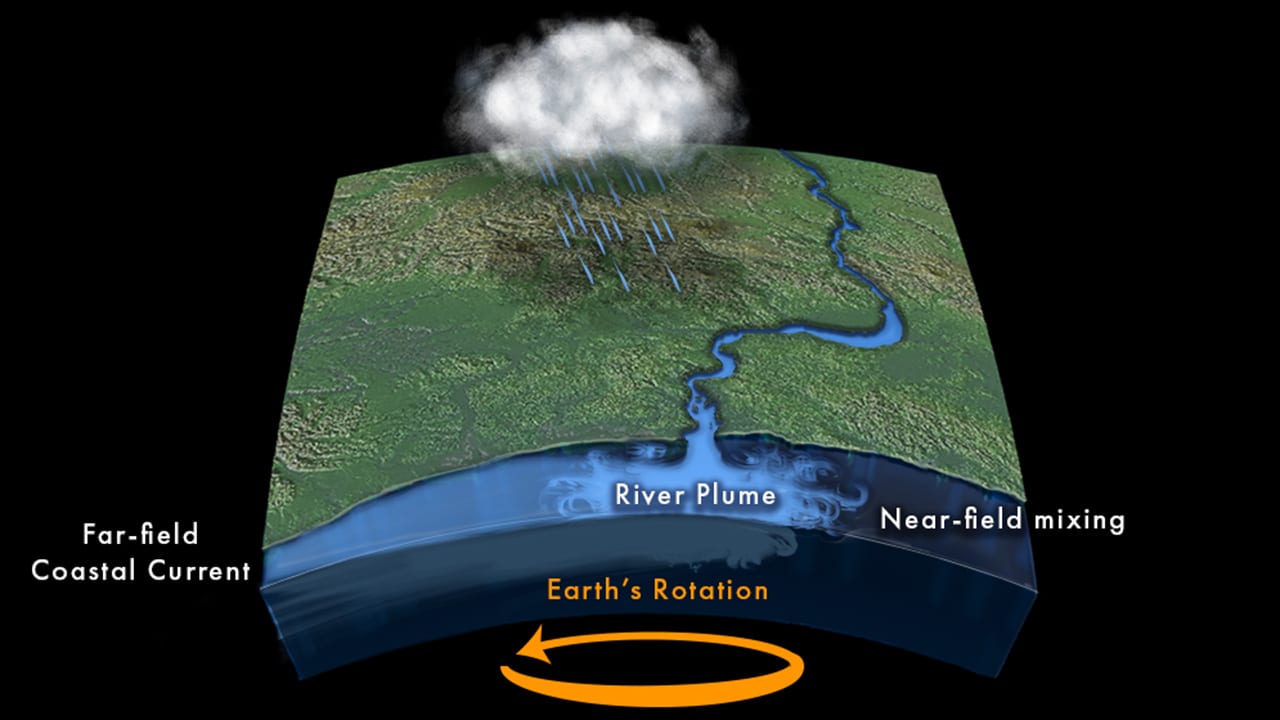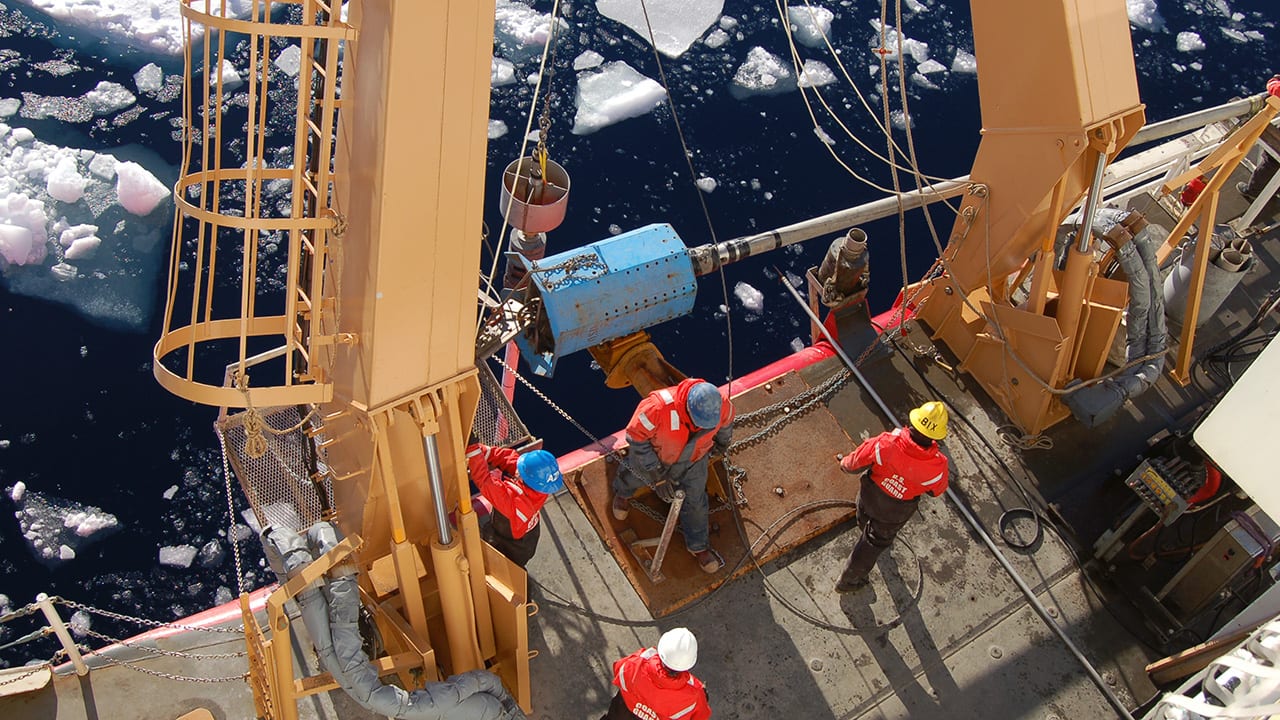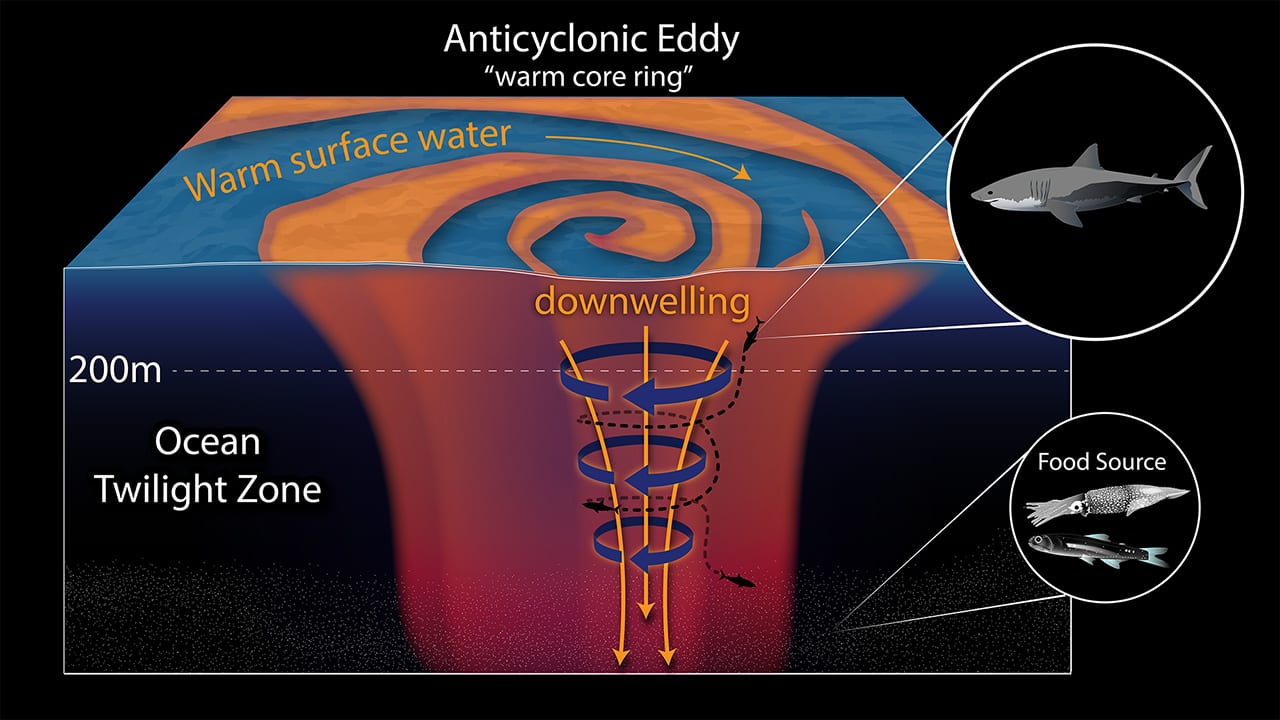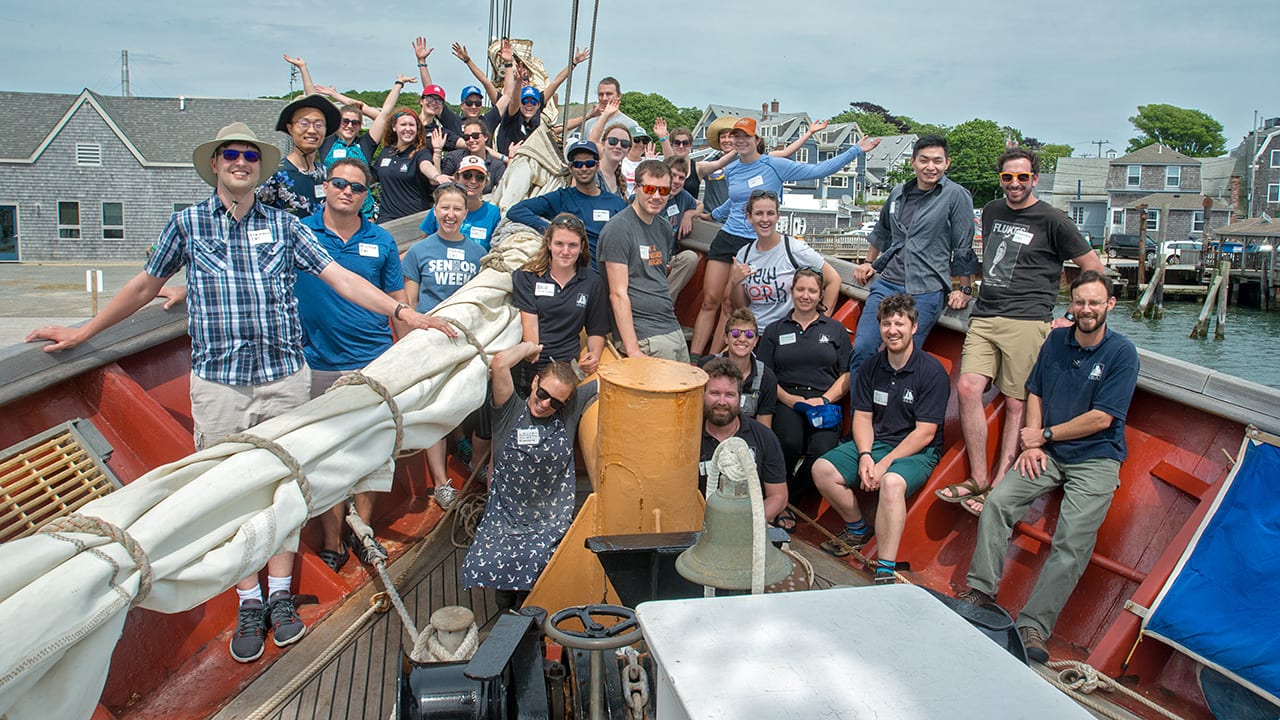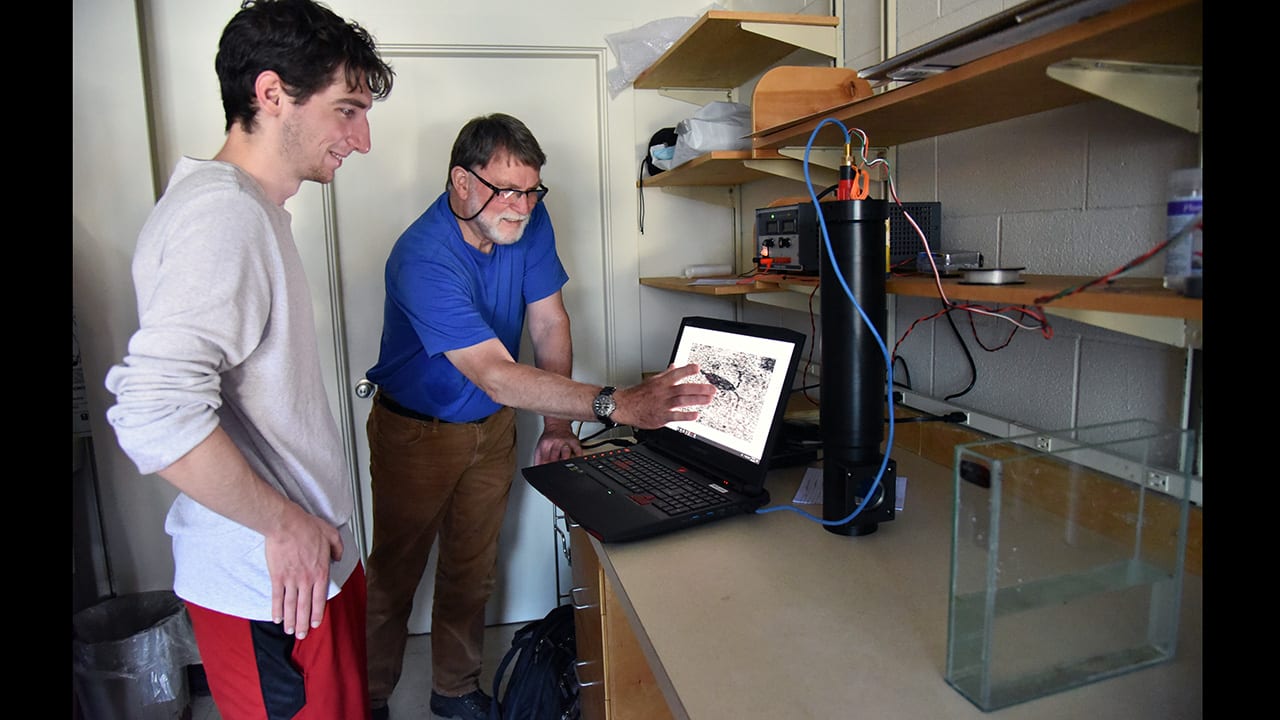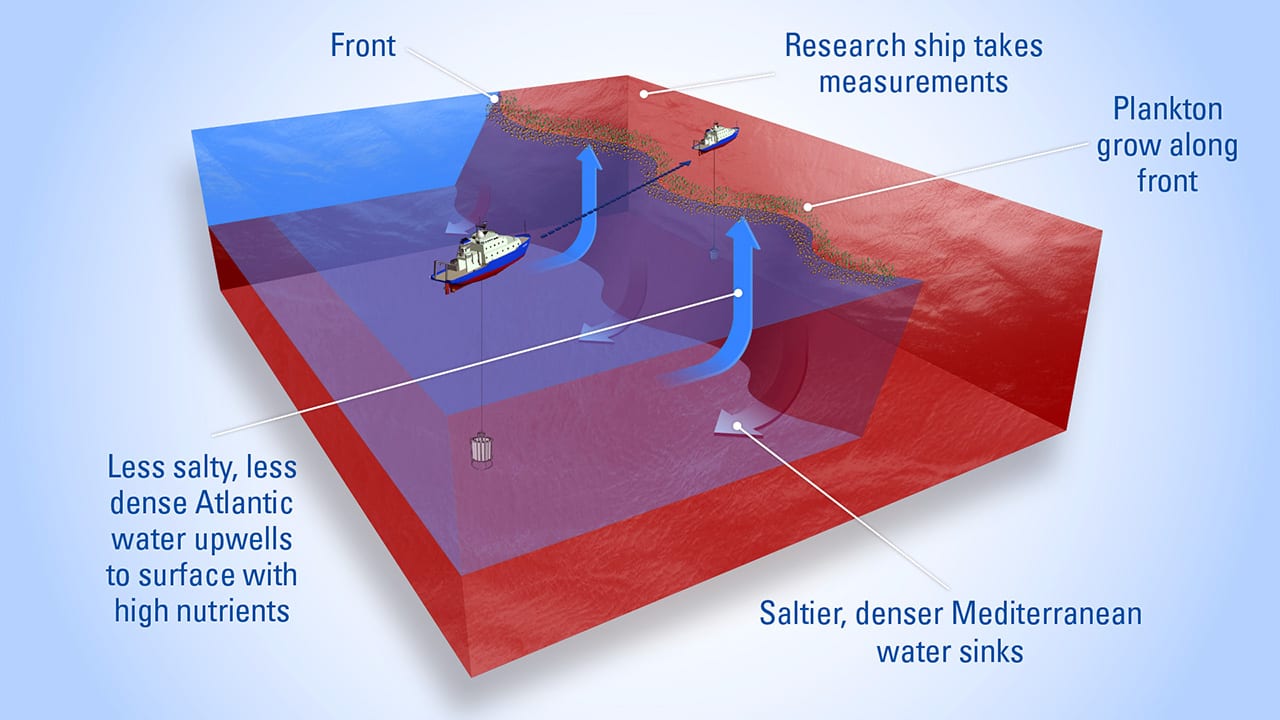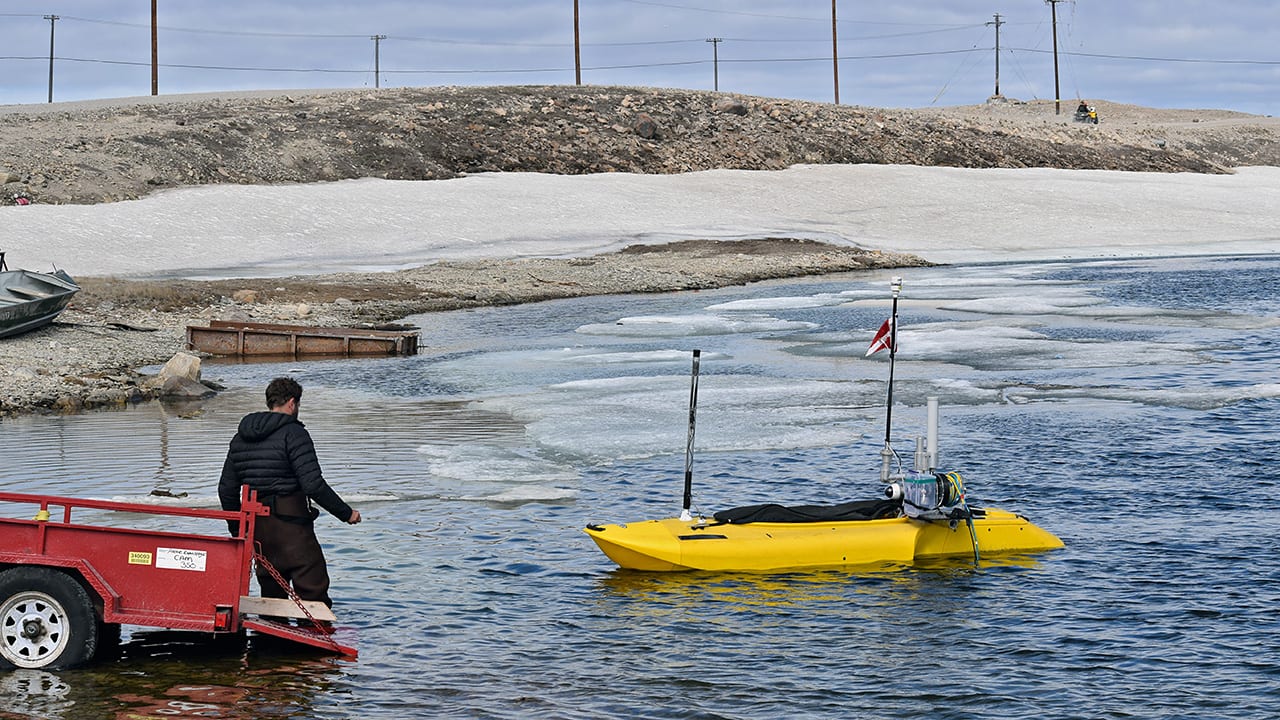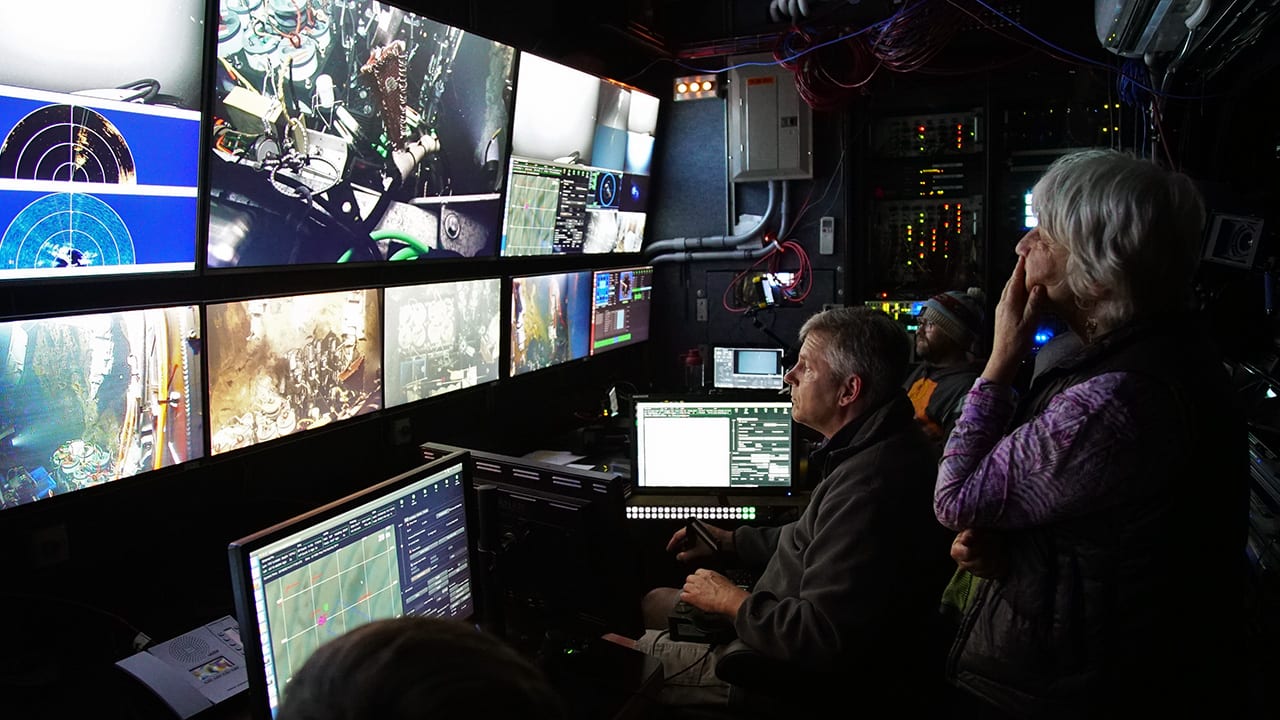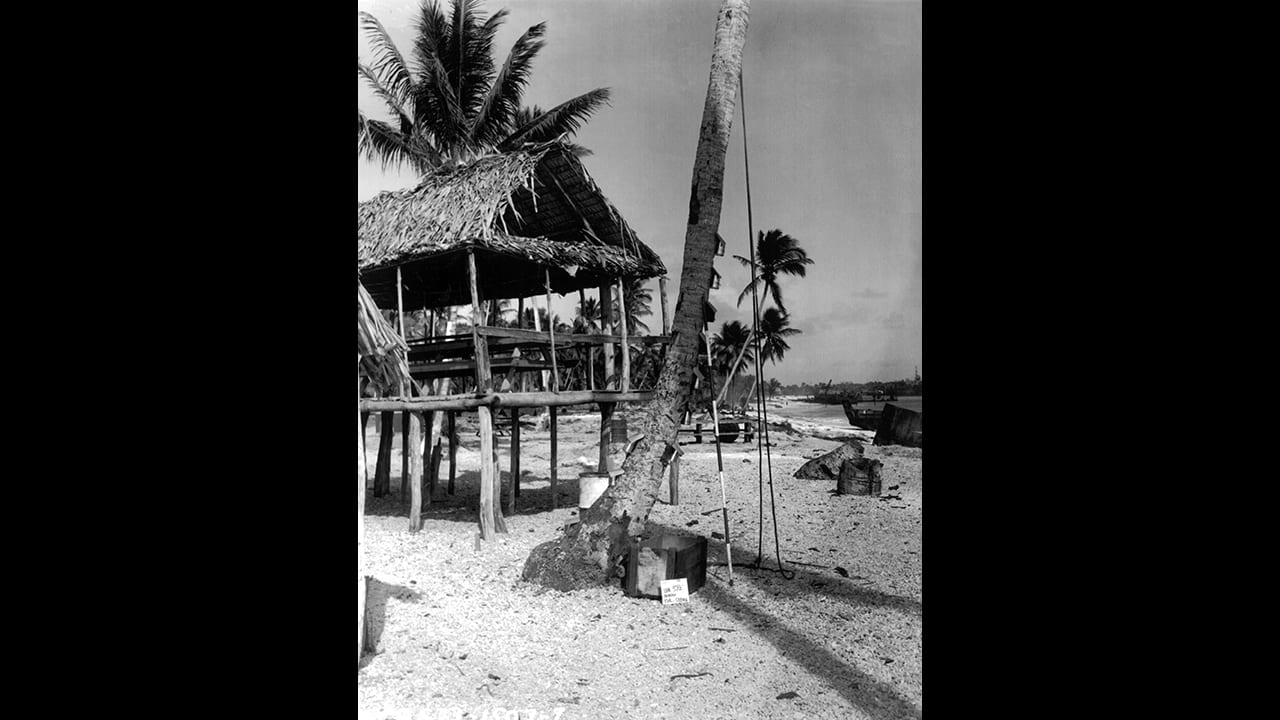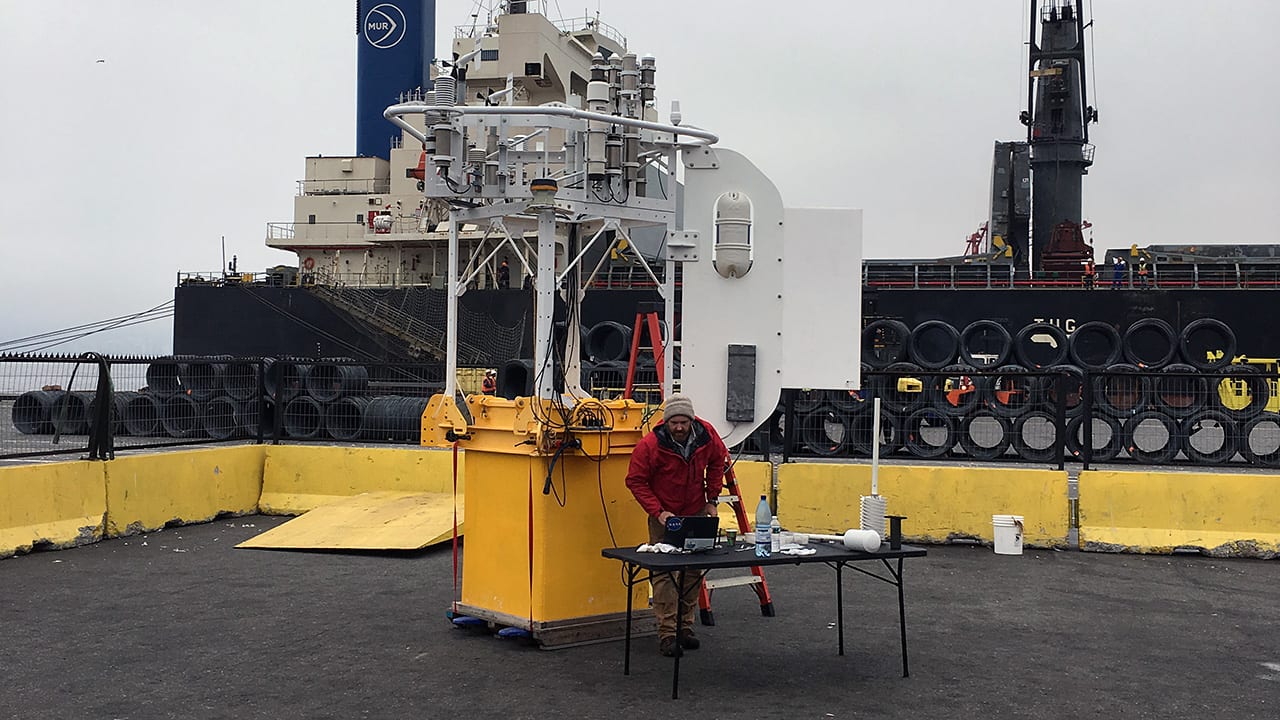Multimedia
Shipshape on Land and at Sea
These colorful straps and ropes—or lines, as they are known on a ship—were photographed hanging outside the rigging van of John Kemp aboard the research vessel Neil Armstrong. Kemp, who…
Read MorePhysics and Math for the Real World
Woods Hole Oceanographic Institution acoustic oceanographer Andone Lavery talks about what drew her to marine science.
Read MoreA Sustainable Collaboration
WHOI postdoctoral investigator Andrea Bogomolni removes winter skates (a fish related to sharks and rays) from a gillnet on a fishing boat off Cape Cod, Mass. These skates were caught…
Read MoreOcean Twilight Zone Engineer Kaitlyn Tradd
Mechanical Engineer Kaitlyn Tradd describes how a day in a WHOI exhibit center changed her life, as she prepares for an unprecedented expedition aboard the R/V Bigelow.
Read MoreVirtual Floats
Sam Levang, a graduate student in the MIT-WHOI Joint Program, uses models to simulate ocean circulation. Into his virtual ocean, he injects “synthetic” floats to see where ocean currents take…
Read MoreNiskin Bottles
WHOI researcher Phil Alatalo (far right) explains the operations of a standard oceanographic tool—the Niskin bottle—to undergraduate students in the WHOI Summer Student Fellowship (SSF) program aboard the research vessel…
Read MoreFair Winds and Following Seas, Finally!
The dense fog that blanketed Woods Hole for two days in late June finally cleared to blue summer skies, allowing MIT-WHOI Joint Program students to embark—two days late—on the Jake…
Read MoreThe Little Sub That Still Can
The human-occupied submersible Alvin surfaces from a mission to the seafloor in a photo taken circa 1967—three years after the sub was first built. Two crewmen known as “swimmers” assist…
Read MoreSnow Globe of Plankton
2018 Summer Student Fellows Maya Chung (Harvard University) and David Brinkley (Amherst College) marvel at a jar of plankton collected from Buzzards Bay in mid-July. The samples were collected during…
Read MoreTake a Science Stroll Tomorrow
Visitors line up to take a tour of WHOI’s research vessel Atlantis and the human-occupied submsersible, Alvin, during the 2017 Woods Hole Science Stroll. The ship and sub will be…
Read MorePoised for Action
Every six months, the imposing, sensor-laden moorings that make up the Ocean Observatories Initiative Pioneer Array need to be “turned”—hauled out of the water and substituted with clean, repaired, and…
Read MoreOcean-Inspired Art
Jellyfish are known for their painful stings—but they can also serve as a source of artistic inspiration. Artist Christina Machinski painted this image of a clinging jellyfish, which in real…
Read MoreRivers and Changing Seas
Sea level in coastal areas can be affected by a number of factors: tides, winds, waves, and even barometric pressure. New research led by WHOI physical oceanographer Chris Piecuch suggests…
Read MoreSolving a Climate Mystery
In 2013, a WHOI-led research team set sail for the Eastern Beaufort Sea. Their mission: to search for evidence of a huge, ancient, freshwater flood caused by the melting of…
Read MoreGetting Ahold of Marine Science
2018 Summer Student Fellows Devon Gaynes (left) and David Davis prepare to deploy a Shipek spring-loaded sediment grab sampler from the research vessel Gulf Challenger. Gaynes, a student at SUNY…
Read MoreDiving Deep for Dinner
Sharks and other large predators may be using swirling pockets of unusually warm water to access food in the ocean twilight zone. In a recent study, researchers from WHOI and…
Read MoreEmbarking on Cruise and Career
More than 400 MIT-WHOI Joint Program students just beginning their oceanographic careers have found their bearings aboard the Jake Peirson Summer Cruise, which began in 1990 as a rich introduction…
Read MoreLarger Than Life
The copepod pictured on this laptop screen is only a few millimeters long, but it appears much larger through the “eyes” of a new holographic camera system. WHOI biologist Peter…
Read MoreNot Quiet on the Ocean Front
Mara Freilich, a graduate student in the MIT-WHOI Joint Program, is exploring where plankton thrives in the ocean. Her research area is the Mediterranean Sea, where less-salty, less-dense water from…
Read MoreAfter the Thaw
WHOI research engineer Kevin Manganini launches “ChemYak,” a variation of the remote-controlled surface vehicle known as JetYak developed by WHOI to collect data in shallow water or difficult conditions. ChemYak…
Read MoreOh, Brothers!
Inside a control van aboard tthe University of Washington research vessel Thompson G. Thompson, Expedition Leader Tito Collasius pilots the remotely operated vehicle (ROV) Jason as engineer Korey Verhein (center)…
Read MoreSurge Levels in a Can
In the late 1940s, WHOI scientists helped document the impacts of U.S. nuclear weapons tests conducted in the Marshall Islands between 1946 and 1958 during Operation Crossroads. To measure surge…
Read MorePrepping for Deployment
Emerson Hasbrouck, an engineering assistant with WHOI’s Upper-Ocean Processes Group, prepares a Stratus buoy for deployment in Valparaíso, Chile. The buoy holds instruments that measure air and sea surface temperatures,…
Read MoreA Turn With the Net
WHOI biologist Peter Wiebe (standing, far left) guides guest student Will Scott in casting a net into the test well on the WHOI pier, as physicist Andone Lavery (seated, left),…
Read More
